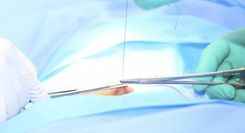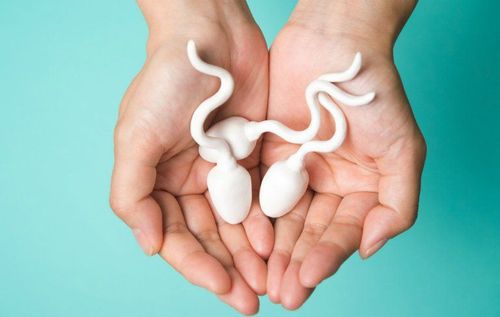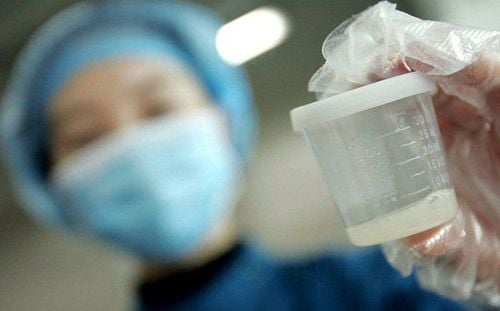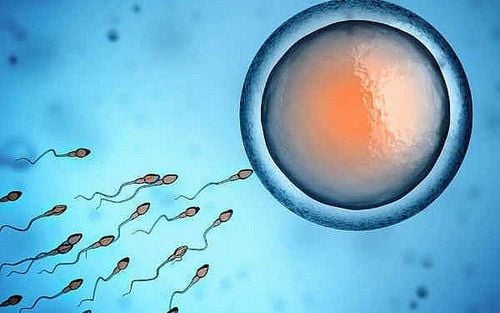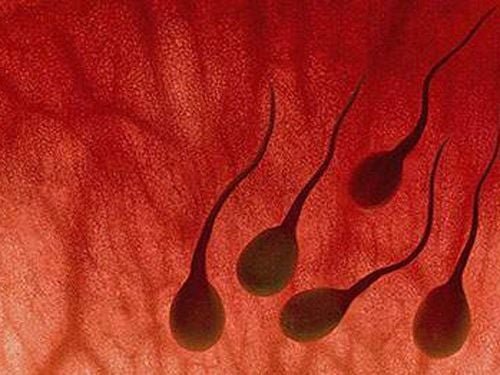The article was professionally consulted by Bachelor Tran Hue Tran - IVF Specialist - Reproductive Support Center - Vinmec Times City International General Hospital.
Semen and sperm are two words often mentioned when talking about men's reproductive health. However, not everyone clearly understands these two words, and sometimes there is confusion in the use of these words.
1. Are semen and sperm the same?
Semen and sperm are like squares and rectangles. Sperm is a part of semen and certainly, semen is not a part of sperm.
Semen is a white fluid that flows out of the penis, the process is also called ejaculation when having sex to reach orgasm. Sperm is the male reproductive cell and is only a component of semen, this is a very important component if you are trying to have children.
2. Why are the terms sperm and semen used interchangeably?
It is a mistake for many people to use the terms sperm and semen interchangeably. Because they think that sperm and semen are the same.
But as explained above, these two terms are completely different and cannot be used interchangeably.
3. Is there anything different in semen?
Semen consists of two components: sperm and fluid synthesized and secreted by the sex glands. Semen is a product of the gonads, of which the majority is from the prostate and seminal vesicles. Semen contains all the components, including sugar, protein, and even some vitamins and minerals.
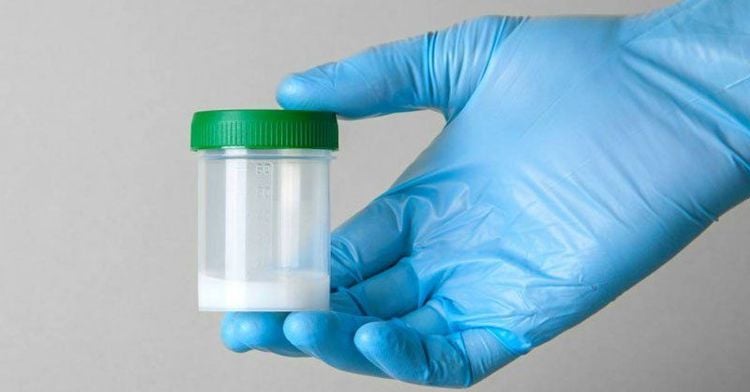
4. What is the role of semen?
You know that sperm cells are shaped like tadpoles and are often called “swimmers.” Although sperm have wiggle tails and look like tadpoles, without the help of semen to carry them, sperm would swim in circles.
Semen is essentially a liquid that helps sperm reach the egg for fertilization.
5. Where is semen formed?
Semen production is a big and quite impressive production process. Semen is formed in a few different places, including:
- Testicles: These are two small organs located inside the scrotum that produce sperm and testosterone.
- Epididymis: This long tube is located near each testicle and moves sperm from your testicles to the vas deferens.
- Vas deferens: This tube connects the epididymis to the urethra, which is the opening that carries urine and semen out of the body. The vas deferens stores sperm and carries it out of the scrotum.
Seminal vesicles: These sac-like glands are located behind the bladder and produce seminal fluid that forms part of semen. - Prostate: The prostate is a gland that surrounds the neck of the bladder and urethra and secretes an alkaline fluid that forms part of semen. It also helps push semen out of the penis.
Once semen is produced, it passes through the urethra and out of the penis during ejaculation.
6. How much semen is there in each ejaculation?
A teaspoon is the average amount of semen produced in a man's ejaculation. But several factors affect semen volume, including:
- Smoking
- Diet
- Exercise
- Overall health
- Age is a major factor in semen volume. A man typically produces the most semen in his early 30s.
If a man has not had sex for a few days, he is more likely to ejaculate.
Testicles: are two small organs located inside the scrotum and make sperm and testosterone. Epididymis: This long tube is located near each testicle and moves sperm from your testicle to the vas deferens. vas deferens: This tube connects the epididymis and the urethra, the opening that carries urine and semen out of the body. The vas deferens store sperm and carry it out of the scrotum. Seminal vesicles: These sac-like glands are located behind the bladder and produce semen that forms part of semen. Prostate: The prostate is a gland that surrounds the neck of the bladder and urethra, and it secretes an alkaline fluid that forms part of semen. It also helps push semen out of the penis. Once semen is made, it passes through the urethra and out of the penis during ejaculation.

7. Are there sperm in the first drops of semen?
Before a man ejaculates, a few drops of semen are released without him even knowing it. These first drops of semen may contain sperm.
This is why the withdrawal method is not considered a reliable form of birth control.
In many studies, samples of semen released before ejaculation have been shown to contain active, motile sperm.
8. Can you see sperm with the naked eye?
You cannot see sperm with the naked eye. You can only see sperm under a microscope. Because sperm are very small. On average, sperm is only 4.3 micrometers (μm) long and about 2.9μm wide.
9. How many sperm are there in each ejaculation?
A normal range of sperm count from 15 million sperm to more than 200 million sperm per milliliter (ml) of semen.
There are many factors that can affect sperm count, from problems anywhere along the reproductive system to medical conditions, lifestyle, and even your living environment.
10. How long do sperm live?
How long sperm can live depends on where it comes into contact when it exits the penis.
Sperm that enters the warm, safe vagina can live for up to 5 days thanks to the protective effects of cervical mucus. The fluid in a woman's reproductive tract has all the nutrients that sperm need to survive during that time.
Once inside a woman's reproductive tract, the sperm cells must swim through the cervix and into the uterus to reach the fallopian tubes and meet the woman's egg. It is a very long journey and very few cells survive when they reach their destination.
For sperm that are released into a woman's vagina, the chances of them surviving there for long are quite low, usually only a few minutes, especially if they come into contact with a cold, dry surface, such as a bathroom floor or a floor.
In a hot tub, sperm cells do not survive very long. Sperm cannot survive for more than a few seconds after exposure to chemicals and hot water.
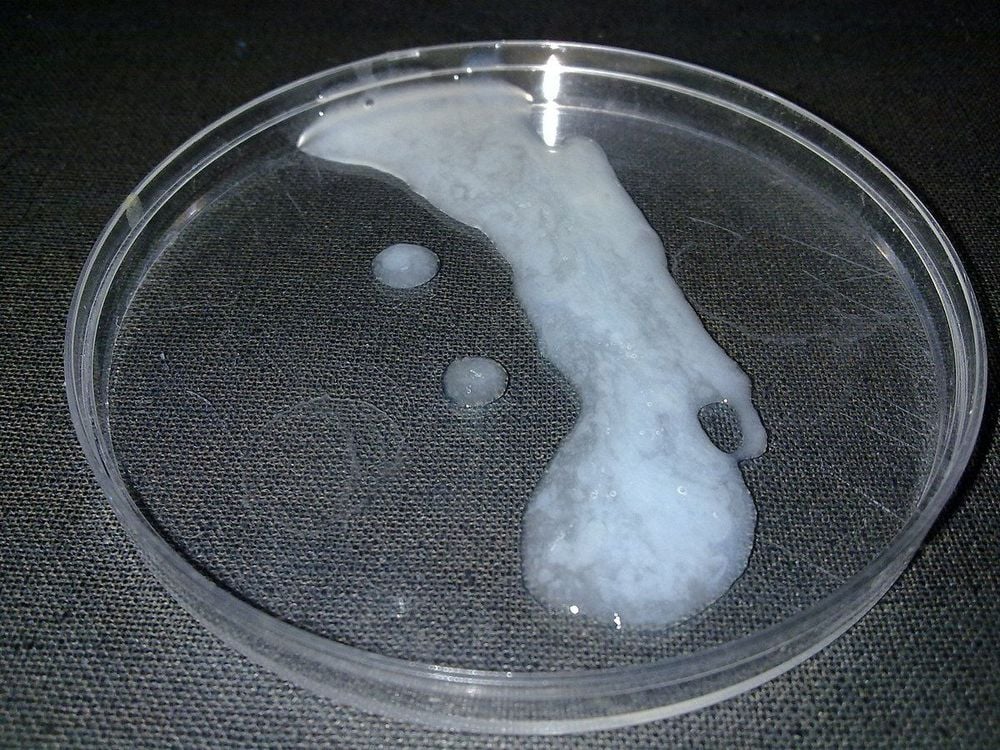
Pregnancy from a man ejaculating into a hot tub would be very rare or even impossible. In a warm tub that is not too hot, sperm cells can survive for a few minutes. However, it is very unlikely that sperm will find their way through the water in the tub and into a woman's vagina. Pregnancy that occurs this way would also be very difficult, if not impossible.
However, if a couple has sex underwater, the chances of pregnancy are higher because the sperm will go straight into the female reproductive tract. The outside temperature and physical environment will not have any effect on the survival of the sperm.
Scientists believe that sperm cells can survive indefinitely once they are frozen, as long as the temperature remains stable. At such low temperatures (-196 ° C), sperm cells are in a state of suspended animation, meaning that all of their essential functions have completely stopped.
Men freeze their sperm for a variety of reasons. Many do so because they are undergoing infertility treatment, have cancer, or have another medical condition that may affect their fertility.
Freezing sperm will allow a man to have children even if he has lost his fertility due to cancer or cancer treatment.
11. How long does it take for the body to make new sperm?
The male body is always making new sperm. The entire process from germ cell to mature sperm takes about 74 days.
12. Does the body ever stop making sperm?
No. A man's body continues to make sperm as long as he is alive. However, the quality and motility of sperm decline over time, especially after age 50.
13. How are sperm produced?
A man's reproductive system is specially designed to produce, store, and transport sperm. Unlike the female reproductive organs, the male reproductive organs are located both inside and outside the pelvic cavity. They include:
- Testicles
- Vas deferens: epididymis and vas deferens.
- Accessory glands: seminal vesicles and prostate.
- Penis
Sperm production occurs in the testicles. At puberty, a man will produce millions of sperm cells every day.

The testicles contain small tubes known as seminiferous tubules, where germ cells are found. These germ cells are transformed into sperm by hormones, including testosterone, the male sex hormone. As they mature, the germ cells develop into a tadpole-like shape, featuring a short head and a tail.
During sexual arousal, sperm mixes with semen, a white fluid secreted by the seminal vesicles and prostate gland, resulting in the formation of complete semen. Through stimulation, up to 500 million sperm can be expelled from the penis in a process known as ejaculation.
Sperm production occurs in the testicles and matures as it travels from the seminiferous tubules through the epididymis and into the vas deferens. While sperm cannot survive long when exposed to air outside the body, they can live inside a woman for up to five days.
Through the above information, you must have understood more about the semen composition as well as how sperm is formed. To have good sperm quality to bring a successful conception rate, men should proactively maintain a nutritious diet and a healthy lifestyle. If there are any reproductive health concerns, it is advisable to visit a doctor for further discussion and evaluation.
Currently, The Reproductive Support Center - Vinmec International General Hospital is the place to receive and handle common reproductive health problems for men and women such as weak sperm, erectile dysfunction, delayed ejaculation, in vitro fertilization, difficulty conceiving...
With the standard of an international hospital, the examination and treatment process here is always performed by a team of experts in the field of obstetrics and gynecology, domestic and international, trained at prestigious centers in the world such as in the US, Singapore, Japan, Australia and famous Reproductive Support Centers. Along with that are modern facilities and full equipment to support the treatment process effectively.
Therefore, customers can be completely assured when visiting Vinmec Hospital.
To arrange an appointment, please call HOTLINE or make your reservation directly HERE. You may also download the MyVinmec app to schedule appointments faster and manage your reservations more conveniently.
References: healthline.com - medicalnewstoday.com
